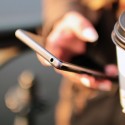Did you know the average American checks their smartphone 150 times a day? Even more shocking, U.S. Workers spend 13 hours per week reading, writing or responding to email. If you think you check your phone fewer than 150 times daily, and spend less than 13 hours a week emailing, you’re ahead of the pack. However, if you still think that your inbox rules your day, we have some expert advice that should help you take back your inbox.
So what is the one time of the day you should resist checking your inbox? You’ve probably heard this before, but the one thing all the experts can agree on is that the first thing you should NOT do to start your day is check your email. Resist the urge to grab your phone the moment your alarm goes off. Instead, take a minute to focus on other things that genuinely need your attention. Could you shift your morning routine for taking your dog for a walk, or take an hour for a workout? It will be so much easier to focus on the task at hand without your head spinning about the email messages you just scanned.
Sid Savara, productivity expert, explains that too many people use their inbox as a “to do” list. Instead, block out time in your day to deal with your email. You are panicking at the mere mention of this notion, right? You’re screaming at your computer at this suggestion because you get some really important emails that require your attention right away, right? It might seem like picking up the phone is an activity of the past, but if something is literally on fire and needs your attention now, someone is not going to send an email, they will call you. Better yet, they might even swing by your desk to get an answer and ask you a couple of follow up questions.
Another reason to block out time in your day to handle your inbox vs. answering them as they come in was discovered in a study done by Daniel J. Levitin, professor at McGill University and his collaborator Vinod Menon. They determined that our mental states of awareness vacillate from being task-positive (working on accomplishing the activity in front of you), or task-negative (taking a break to daydream). When we swing too quickly from one state to the other, we don’t focus on anything because we can’t digest all the information we’re taking in, leaving us feeling wary and unable to focus.
No matter which approach you take to handling your inbox, when you are diving into your messages, consider taking Scott Scheper’s flowchart approach he uses in his book, “How to get focused.” Scheper asks these 3 questions when tackling his inbox:
- Is this relevant?
- Can I solve this?
- Will it take less than 2 minutes of my time to deal with this?
If you encounter a message that doesn’t meet any of the above criteria, skip it. This approach can help you determine what’s important, what’s not, and result in conquering your inbox faster.
If the compulsion to check your inbox still nags at you even after all these reasons to leave it alone, turn off your push notifications. Your phone will no longer be able to tell you when you have a new email, you’ll discover it when you login during time you allocate during your day to focus on just tackling your inbox.
Everyone’s email habits are different, but the other thing the experts agree on is that we are giving up too much precious time with our families and loved ones in favor of answering email. Use this advice to formulate a plan that puts you in charge of your inbox and severs your compulsion to hit refresh and lose focus on what really needs your attention right now.


